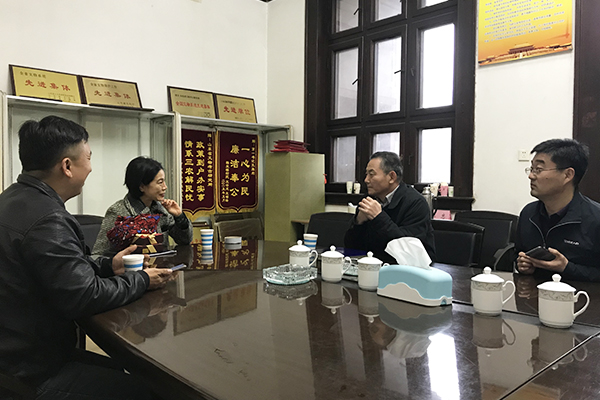10 April, 2019

On April 9, a few members of Chinese Cultural Studies Center, including the founder Oi Ling Chiang, had the opportunity to visit the Shandong Provincial Institute of Cultural Relics and Archaeology. They met with Mr. Zheng Tongxiu, the director of the Institute, and Mr. Gao Mingkui, a senior researcher at the Institute. The visitors were shown around the beautiful campus of the Institute, a protected heritage site which was built in the Republic period, as the headquarters of the philanthropic association, Red Swastika Society ( 世界紅卍字會 ). The meeting between Chinese Cultural Studies Center and the Shandong Provincial Institute of Cultural Relics and Archaeology was an informal, yet productive one, with the two organizations discussing potential opportunities for collaboration.
The Institute also arranged for Chinese Cultural Studies Center to have an exclusive visit to one of their current archaeological sites, a Western Han dynasty tomb near Lingsheng Lake in Dingtao County. Rescue excavation was conducted on this site beginning in October 2010. Although it was largely empty of burial goods, what they discovered of the tomb structure itself was spectacular. The walls, floors, and ceilings were lined with massive amounts of wood—an estimated total of over 2200 cubic meters of wood. This tomb is in fact the best-preserved large-scale “ huangchang ticou ” tomb found to date in China. Huangchang ticou (“stacked ends of yellow intestines”) is a burial system of wooden complexes that was seen from the Spring and Autumn Period to the Han dynasty—the chamber complex layout evolved through time, but the underlying characteristic was the use of cypress heartwood, and stacking them horizontally, with their stacked ends forming the faces of walls. Although there is nothing in the tomb itself to definitively identify the tomb’s owner, historical records and other supporting evidence indicate that the tomb was that of Empress Dowager Ding, the mother of Emperor Ai. It was a privilege for members of Chinese Cultural Studies Center to visit the site, and they look forward to the day when the museum plans for the site are completed and it will be open to the public.
